
BHEX Mini
Direct Imaging Black Holes from LEO
Ref Bari | Update to Ben (07/04)



BHEX Mini










BHEX Mini









Size
Weight
Power
Power
Cost

BHEX Mini








Size
Weight
Power
Power
Cost


BHEX Mini



Ron Turner (NASA NIAC)

NASA Pioneers


Aspera

Pandora

StarBurst
PUEO
(Galaxy Evolution via UV)

(Exoplanet Explorer)

(Neutron Stars via Gamma Rays)

(Particle Physics via High-Energy Neutrinos)

BHEX Mini Coverage

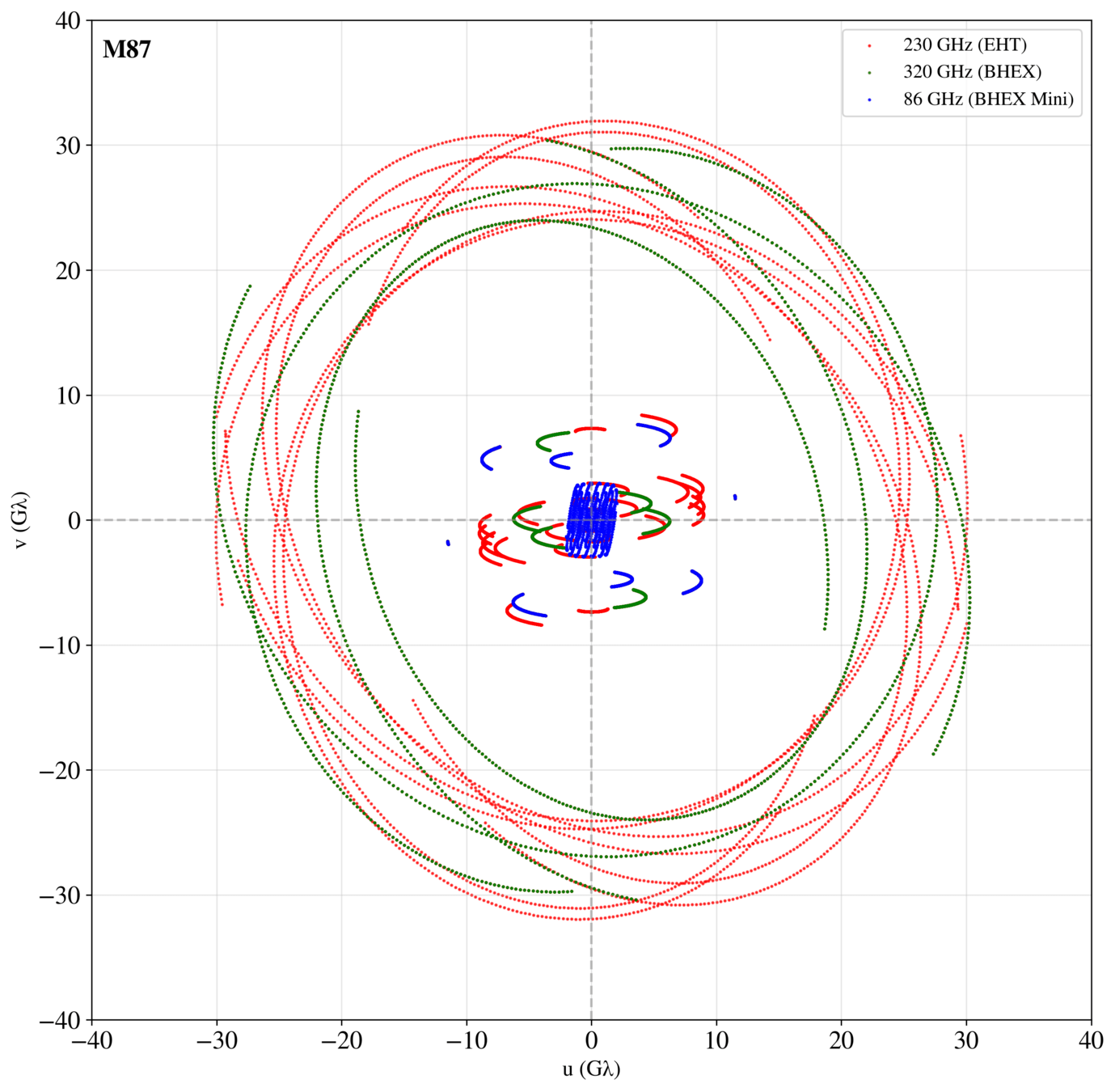

Antenna




Antenna



Cryocooler



Cryocooler

HiPTC Heat Intercepted Pulse Tube Cooler
- Cost: $10 Million
- Mass: 22kg
-
Cooling power
- 400 mW at 15K
- 5.2 W at 100K
- Electric power: 300 W

Cryocooler


HiPTC Heat Intercepted Pulse Tube Cooler
- Cost: $10 Million
- Mass: 22 kg
-
Cooling power
- 400 mW at 15K
- 5.2 W at 100K
- Electric power: 300 W

Raytheon RSP2: Sterling PT-Hybrid
- Cost: ~$6-8 Million
- Mass: 25 kg
-
Cooling power
- 2.1W at 20K
- 6 W at 60K
- Electric power: 450 W

BHEX Mini



BHEX Mini

NIAC Phase I
Step 1: 100/300 ~ 33% Acceptance
Step 2: 12/100 ~ 12% Acceptance
Step 3: $175,000 for 9 Months


Our Competition

Fluidic Telescope (FLUTE): Enabling the Next Generation of Large Space Observatories


Our Competition
Bend-Forming of Large Electrostatically Actuated Space Structures




Our Competition
Hybrid Observatory for Earth-like Exoplanets (HOEE)





Our Competition
SCOPE: ScienceCraft for Outer Planet Exploration






Our Competition
Kilometer-Scale Space Structures from a Single Launch







Our Competition
Beholding Black Hole Power with the Accretion Explorer Interferometer








Our Competition
Solar System-Scale VLBI to Dramatically Improve Cosmological Distance Measurements









Our Competition
Swarming Proxima Centauri: Coherent Picospacecraft Swarms Over Interstellar Distances










Our Competition
LIFA: Lightweight Fiber-based Antenna for Small Sat-Compatible Radiometry











Our Competition









Water Telescope
50m Antenna
Self-Assembling Telescope
Large antennas
Starshade Telescope
Directly image exoplanets
Quantum-dot propelled sails
Explore exoplanets
Retractable structure to enable artificial gravity
Enable long-term human living in space
Create a swarm of X-Ray Interferometers
Enable studies of black hole jets and accretion disks
Lightsail swarms
Explore exoplanets
Solar system scale VLBI
Advance Precision-based Cosmology
Large RF Antennas
Enable salinity measurements


Our Competition









Water Telescope
50m Antenna
Self-Assembling Telescope
Large antennas
Starshade Telescope
Directly image exoplanets
Quantum-dot propelled sails
Explore exoplanets
Quantum-Assisted VLBI Network in LEO
Enable time-resolved imaging of Sgr A* & M87 ("black hole video")
Create a swarm of X-Ray Interferometers
Enable studies of black hole jets and accretion disks
Lightsail swarms
Explore exoplanets
Solar system scale VLBI
Advance Precision-based Cosmology
Large RF Antennas
Enable salinity measurements


















BHEX Mini
An AI-Assisted Modular VLBI Constellation in LEO












BHEX Mini
An AI-Assisted Modular VLBI Constellation in LEO



NASA NIAC




Quinn Morley (Boeing)

NASA NIAC


Quinn Morley (Boeing)



NASA NIAC


Quinn Morley (Boeing)

TITAN Air Proposal (NIAC Phase I Selection, 2021)

NASA NIAC



NASA NIAC



BHEX Mini


Partner Satellite to BHEX

Stand-alone Satellite

Pathfinder Mission
BHEX Mini

Partner Satellite to BHEX

Stand-alone Satellite

Pathfinder Mission
Supplement (u,v) coverage at 86 GHz
Enable parameter estimation of Sgr A*/M87
Achieve Space-Space VLBI



BHEX Mini

Pathfinder Mission


Partner Satellite to BHEX

Stand-alone Satellite
Supplement (u,v) coverage at 86 GHz
Enable parameter estimation of Sgr A*/M87
Achieve Space-Space VLBI
Supplement (u,v) coverage at 86 GHz
Enable parameter estimation of Sgr A*/M87
Achieve Space-Space VLBI
Survey of >25 AGN+BH Targets @86 GHz
Enable Population Modeling of SMBHs
Enable real-time imaging of dynamical accretion disk around Sgr A*
Enable multi-messenger gravitational astronomy w/ LIGO + LISA

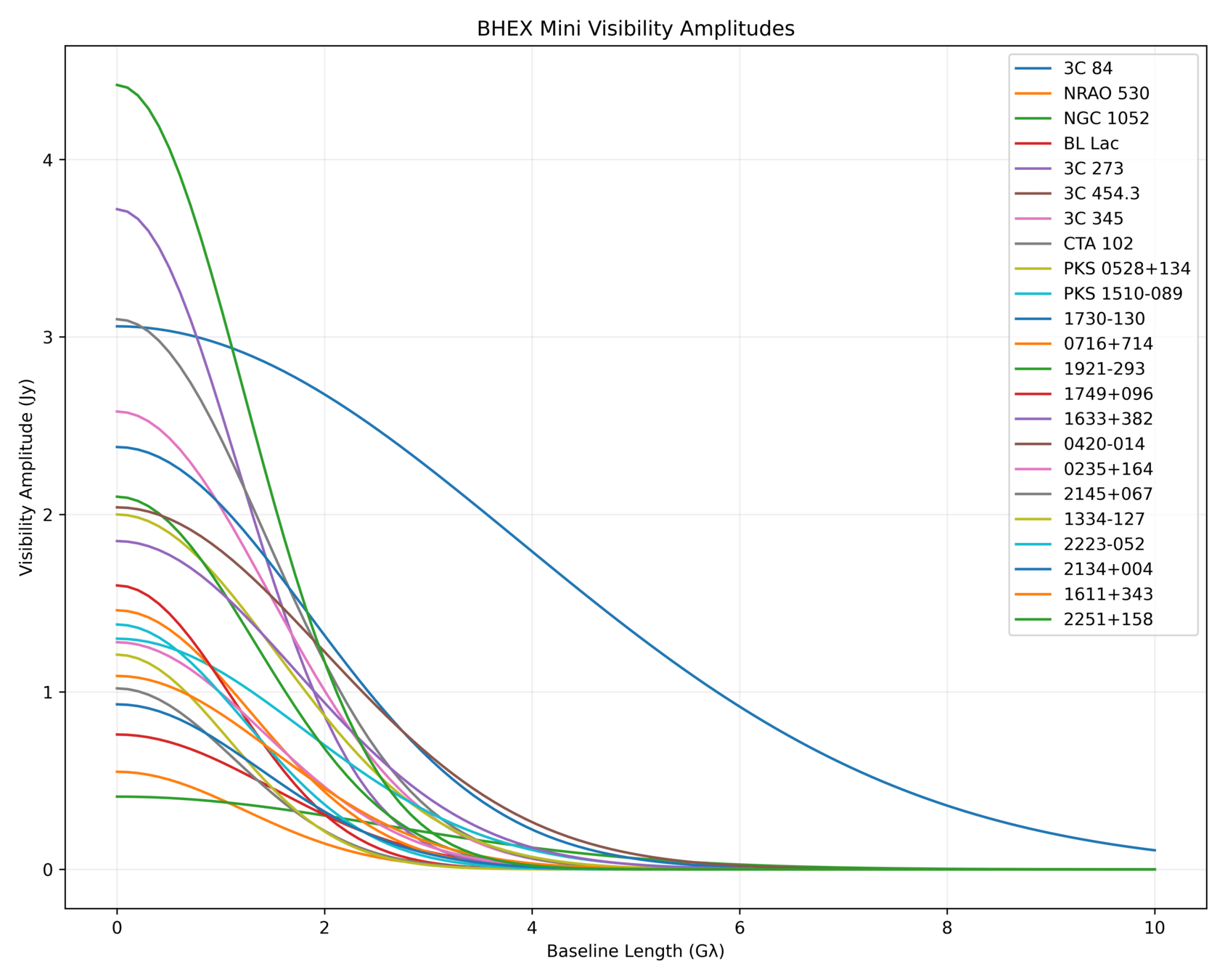
BHEX Mini


Partner Satellite to BHEX

Stand-alone Satellite

Pathfinder Mission
Supplement (u,v) coverage at 86 GHz
Enable parameter estimation of Sgr A*/M87
Achieve Space-Space VLBI
Supplement (u,v) coverage at 86 GHz
Enable parameter estimation of Sgr A*/M87
Achieve Space-Space VLBI
Survey of >25 AGN+BH Targets @86 GHz
Enable Population Modeling of SMBHs
Enable real-time imaging of dynamical accretion disk around Sgr A*
Enable multi-messenger gravitational astronomy w/ LIGO + LISA
Enable low-cost Space-Ground & Space-Space VLBI

BHEX Mini

Sub-milli arcsecond angular resolution
Dual short and long baseline lengths
Rapid coverage of (u,v) plane
Decreased signal loss from LEO
Decreased radiation environment in LEO vs. MEO







BHEX Mini

Sub-milli arcsecond angular resolution
Dual short and long baseline lengths
Rapid coverage of (u,v) plane
Decreased signal loss from LEO
Decreased radiation environment in LEO vs. MEO






Prospects of Detecting a Jet in Sagittarius A* with VLBI (Chavez et. al., ApJ 2024)


BHEX Mini

Sub-milli arcsecond angular resolution:
Dual short and long baseline lengths
Rapid coverage of (u,v) plane
Decreased signal loss from LEO
Decreased radiation environment in LEO vs. MEO





- What kind of targets can we observe with this angular resolution?


BHEX Mini

Sub-milli arcsecond angular resolution:
Dual short and long baseline lengths
Rapid coverage of (u,v) plane
Decreased signal loss from LEO
Decreased radiation environment in LEO vs. MEO





- What kind of targets can we observe with this angular resolution?




BHEX Mini

Sub-milli arcsecond angular resolution:
Dual short and long baseline lengths
Rapid coverage of (u,v) plane
Decreased signal loss from LEO
Decreased radiation environment in LEO vs. MEO





- What kind of targets can we observe with this angular resolution?





Metrics and Motivations for Earth–Space VLBI: Time-resolving Sgr A* with the Event Horizon Telescope (Palumbo et. al., ApJ 2019)

BHEX Mini

Sub-milli arcsecond angular resolution:
Dual short and long baseline lengths
Rapid coverage of (u,v) plane
Decreased signal loss from LEO
Decreased radiation environment in LEO vs. MEO





- What kind of targets can we observe with this angular resolution?





Metrics and Motivations for Earth–Space VLBI: Time-resolving Sgr A* with the Event Horizon Telescope (Palumbo et. al., ApJ 2019)

BHEX Mini

Sub-milli arcsecond angular resolution:
Dual short and long baseline lengths
Rapid coverage of (u,v) plane



- What kind of targets can we observe with this angular resolution?

Multifrequency Black Hole Imaging for the Next-generation Event Horizon Telescope (Chael et. al., 2023, ApJ)




BHEX Mini

Sub-milli arcsecond angular resolution:
Dual short and long baseline lengths
Rapid coverage of (u,v) plane
Decreased signal loss from LEO
Decreased radiation environment in LEO vs. MEO





- What is the integration time for BHEX Mini on the (u,v) plane?
- Could BHEX Mini possibly enable direct imaging of dynamic accretion disk around Sgr A*? (i.e., creating a movie of a black hole!)

BHEX Mini

Sub-milli arcsecond angular resolution
Dual short and long baseline lengths
Rapid coverage of (u,v) plane
Decreased signal loss from LEO
Decreased radiation environment in LEO vs. MEO






BHEX Mini

Sub-milli arcsecond angular resolution
Dual short and long baseline lengths
Rapid coverage of (u,v) plane
Decreased signal loss from LEO
Decreased radiation environment in LEO vs. MEO







Maximum data transmission rate (in bits per second); How fast can you send data from BHEX Mini to the earth?

BHEX Mini

Sub-milli arcsecond angular resolution
Dual short and long baseline lengths
Rapid coverage of (u,v) plane
Decreased signal loss from LEO
Decreased radiation environment in LEO vs. MEO







Power of Transmitted Signal: Strength of downlink signal in Watts (i.e., shouting louder to be heard further away!)

BHEX Mini

Sub-milli arcsecond angular resolution
Dual short and long baseline lengths
Rapid coverage of (u,v) plane
Decreased signal loss from LEO
Decreased radiation environment in LEO vs. MEO







Transmitter Gain: How well-focused your signal is when it leaves the satellite
(i.e., shouting into a megaphone instead of into the wind)

BHEX Mini

Sub-milli arcsecond angular resolution
Dual short and long baseline lengths
Rapid coverage of (u,v) plane
Decreased signal loss from LEO
Decreased radiation environment in LEO vs. MEO







Receiver Gain: How effectively the ground station collects and concentrates the incoming signal (i.e., ALMA's big dish listening to our incoming signal)
Received Power: How strong is the signal once it hits the ground receiver? (after traveling through empty space)

BHEX Mini

Sub-milli arcsecond angular resolution
Dual short and long baseline lengths
Rapid coverage of (u,v) plane
Decreased signal loss from LEO
Decreased radiation environment in LEO vs. MEO







Receiver Gain: How effectively the ground station collects and concentrates the incoming signal (i.e., ALMA's big dish listening to our incoming signal)
Distance: How much distance did the signal travel through free space? (LEO vs. MEO!)

BHEX Mini

Sub-milli arcsecond angular resolution
Dual short and long baseline lengths
Rapid coverage of (u,v) plane
Decreased signal loss from LEO
Decreased radiation environment in LEO vs. MEO







Receiver Gain: How effectively the ground station collects and concentrates the incoming signal (i.e., ALMA's big dish listening to our incoming signal)
- Since BHEX Mini's laser downlink would suffer less signal loss from LEO than BHEX at MEO, can we transmit more data?
- Can this be leveraged to use 2-bit quantization instead of 1-bit quantization?

BHEX Mini
Sub-milli arcsecond angular resolution
Dual short and long baseline lengths
Rapid coverage of (u,v) plane
Decreased radiation environment in LEO vs. MEO




Sub-milli arcsecond angular resolution
Dual short and long baseline lengths
Rapid coverage of (u,v) plane
Decreased signal loss from LEO
Decreased radiation environment in LEO vs. MEO





Decreased ISM scattering at LEO than MEO



BHEX Mini
Decreased ISM scattering at LEO than MEO



Orbit design for mitigating interstellar scattering effects in Earth-space VLBI observations of Sgr A* (Aditya Tamar, Ben Hudson, Daniel C.M. Palumbo, A&A, 2025)

BHEX Mini
Decreased ISM scattering at LEO than MEO


Intrinsic Gaussian Source

BHEX Mini
Decreased ISM scattering at LEO than MEO


ISM Scattering
- At MEO, BHEX is 20x the orbital altitude of BHEX Mini
- BHEX observes at a f=320 GHz, 4x higher than BHEX Mini

BHEX Mini
Decreased ISM scattering at LEO than MEO


BHEX Mini Visibility Amplitude Advantage
Regardless of Source Flux Density!

BHEX Mini
Decreased ISM scattering at LEO than MEO










BHEX Mini


BHEX Mini









Antenna
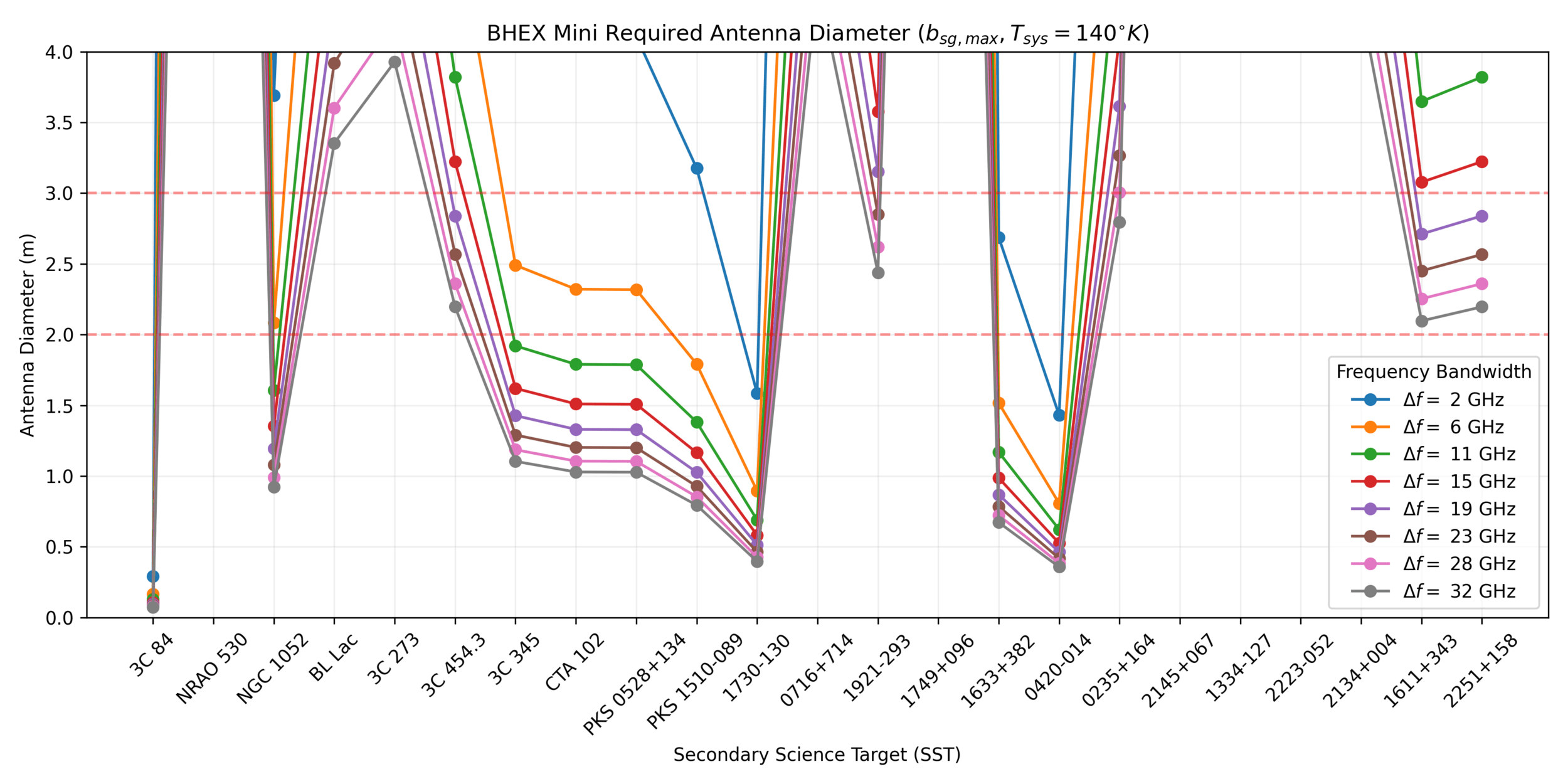

BHEX Mini









Receiver

BHEX Mini









Cryocooler

BHEX Mini









Solar Panels

BHEX Mini



Ultra-Stable Oscillator
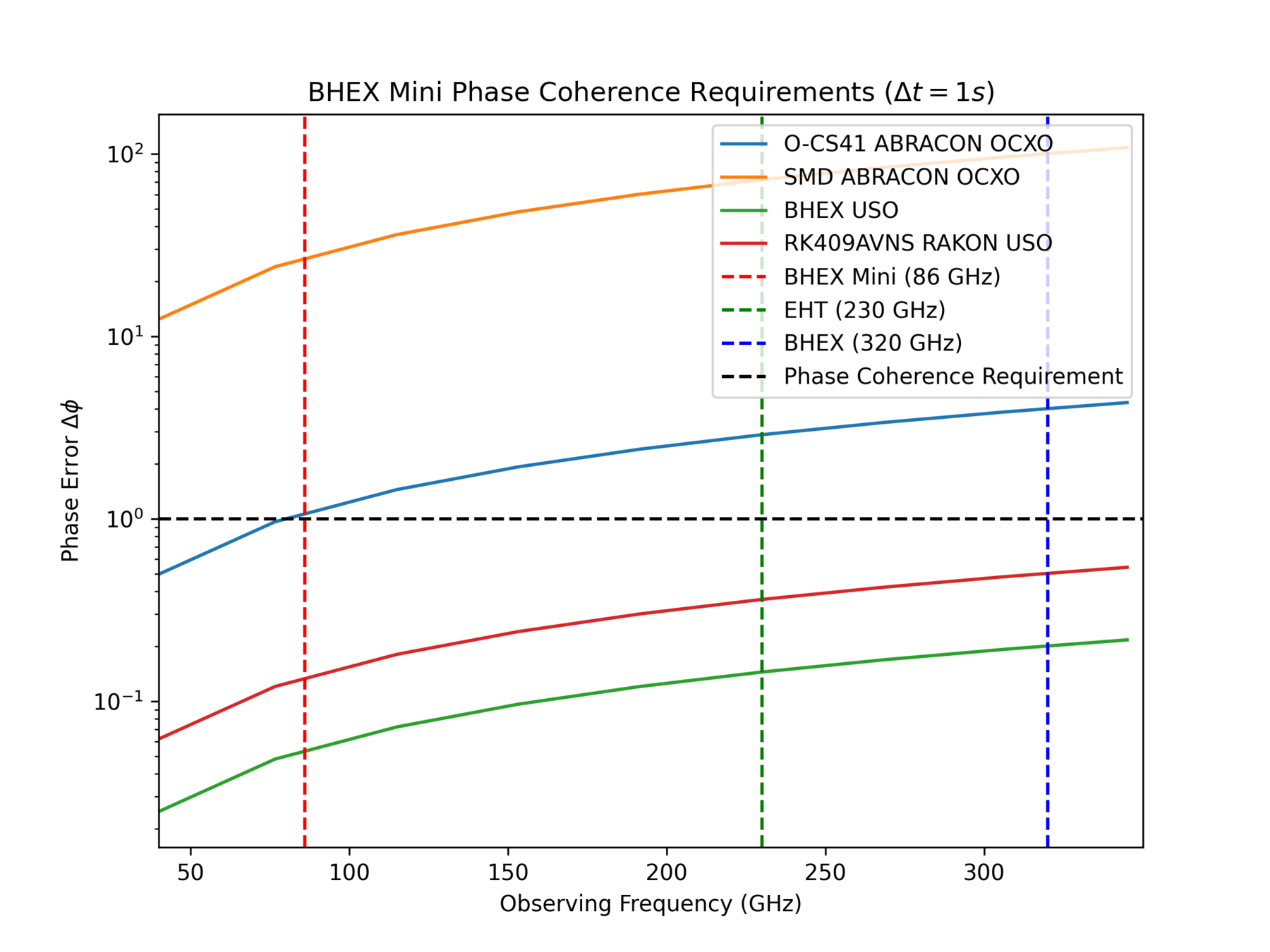


BHEX Mini



Ultra-Stable Oscillator
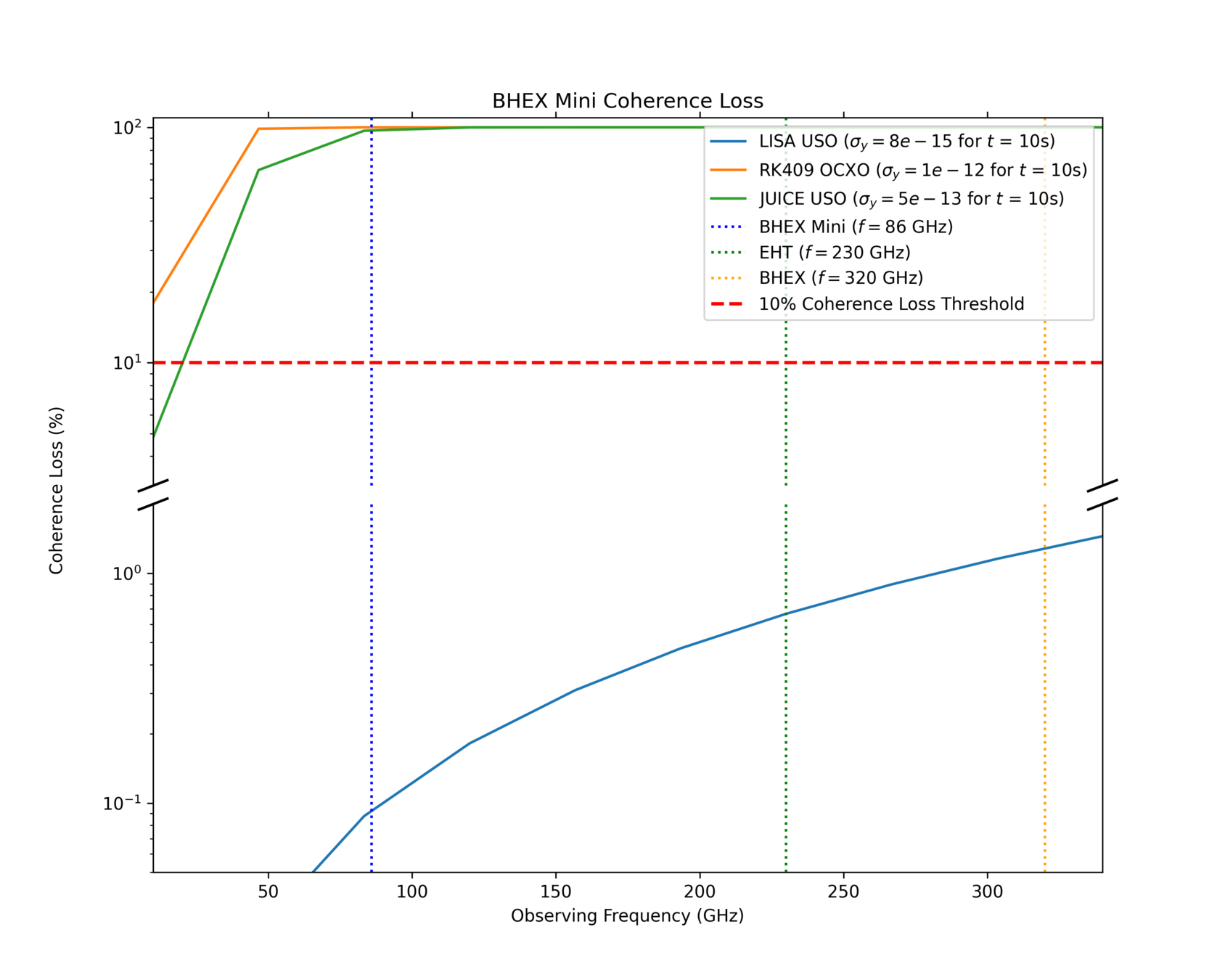
Phase Error

BHEX Mini



Ultra-Stable Oscillator



BHEX Mini



Ultra-Stable Oscillator
Allan Deviation

ABRACON SMD OCXO


BHEX Mini









Digital Backend

BHEX Mini




Original Analog Radio Signal

BHEX Mini




Sample the Signal every Unit Interval
Nyquist-Shannon Sampling Theorem

BHEX Mini




Retain only the samples and record the sign of the voltage for each sample

BHEX Mini



Reconstruct the original signal


BHEX Mini




BHEX Mini



Quantization Efficiency: how much of the analog SNR is retained after digitization

BHEX Mini


SNR: Signal to Noise Ratio

BHEX Mini


Data Generation Rate: In Bits per Second

BHEX Mini


Cross-Correlation

BHEX Mini Next Steps

Phy
- What are BHEX Mini's primary science objectives?
- To what extent can BHEX Mini achieve its objectives?
Eng
- SWaPC Requirements for Instrumentation
Fund
- Write Grant Proposals for Nelson Grants
- Write Abstract for SpaceCom 2026
- Write De-scoped BHEX Mini #1 & #2




BHEX Mini | Ben Update 07/04
By Ref Bari
BHEX Mini | Ben Update 07/04
- 41



